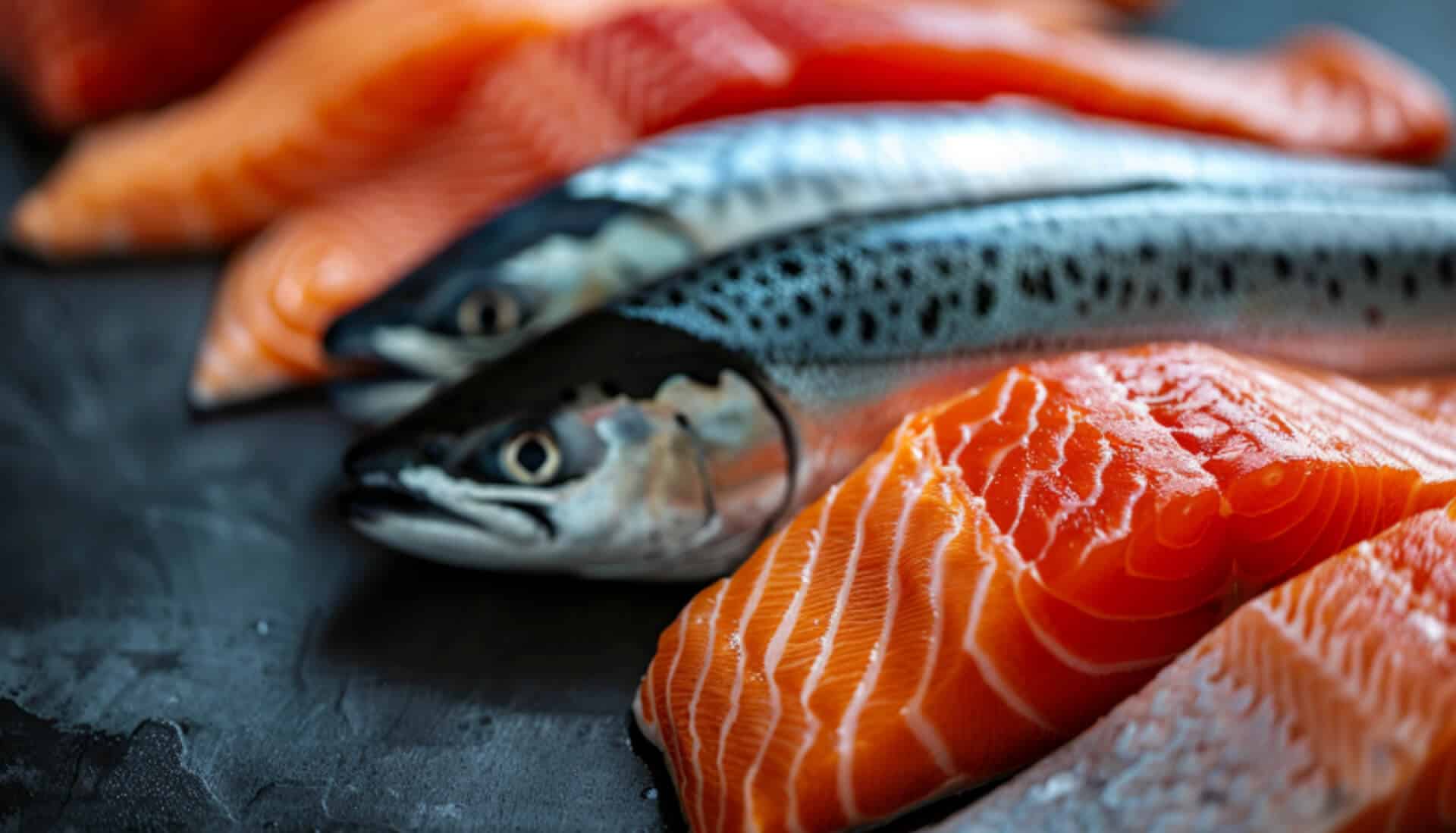Nutritional Profile of Fish for Bone Health
Fish is a potent source of nutrients essential for bone health. The omega-3 fatty acids present in fish, particularly EPA and DHA, are known for their anti-inflammatory properties, which play a crucial role in maintaining bone density and strength. These fatty acids also enhance calcium absorption, a mineral vital for bone structure and health.
Essential Nutrients in Fish
Fish are rich in several nutrients that are beneficial for bones:
- Calcium: Vital for bone structure and strength.
- Vitamin D: Facilitates calcium absorption and bone growth.
- Phosphorus: Works with calcium to build strong bones and teeth.
- Omega-3 Fatty Acids: Reduce bone loss and increase bone formation.
Omega-3 Fatty Acids and Bone Density
Omega-3 fatty acids found in fish like salmon and mackerel have been linked to improved bone density. They work by reducing inflammation, which can contribute to bone loss, and by enhancing the absorption of calcium, a key mineral for bone health.
Vitamins and Minerals Crucial for Healthy Bones
Fish is a natural source of:
- Vitamin D: Increases the absorption of calcium and phosphorus.
- Vitamin B2 (Riboflavin): Essential for bone health as it helps in the maintenance of normal bones.
- Minerals: Including calcium and phosphorus, which are critical for developing and maintaining healthy bone tissue.
Bioavailability of Nutrients in Fish
The bioavailability of nutrients in fish is generally high, meaning the body can easily absorb and utilise these nutrients. This is particularly true for vitamin D and omega-3 fatty acids, which are more readily available from fish than plant sources.
Key Fish Varieties for Enhanced Calcium and Vitamin D Intake

When considering fish as a source of calcium and vitamin D, certain species stand out for their rich content. Salmon, particularly wild-caught, is renowned for its high levels of vitamin D. Sardines and mackerel are also excellent choices, offering substantial calcium content, especially when consumed with their bones.
The Superiority of Vitamin D from Fish
Vitamin D plays a pivotal role in bone health by facilitating calcium absorption. Fish-derived vitamin D is particularly beneficial due to its high bioavailability, meaning your body can absorb and utilise it more efficiently than synthetic supplements.
Comparing Natural and Supplemental Vitamin D Sources
While supplements can help prevent vitamin D deficiency, natural sources like fish provide a synergistic blend of nutrients. These include omega-3 fatty acids and selenium, which work in concert with vitamin D to support bone health.
Fish Selection for At-Risk Populations
For individuals prone to bone diseases, incorporating fish like salmon and sardines into their diet is advisable. These species not only deliver high levels of calcium and vitamin D but also provide other nutrients essential for preventing conditions such as osteoporosis.
By choosing the right types of fish, you can significantly contribute to the strength and health of your bones, while also enjoying a variety of flavours and culinary experiences.
The Role of Omega-3 Fatty Acids in Bone Integrity

Omega-3 fatty acids, prevalent in fish such as salmon, mackerel, and sardines, are essential for maintaining bone density and structural integrity. These polyunsaturated fats are known to enhance the body’s calcium absorption, a mineral vital for bone health, and reduce the rate of bone loss.
Omega-3 Intake and Osteoporosis Prevention
Research indicates a correlation between omega-3 consumption and a lower risk of osteoporosis. By modulating the balance between bone formation and resorption, omega-3s contribute to a more robust skeletal framework, potentially diminishing the incidence of osteoporosis.
Impact of Omega-3s on Fracture Risk
Incorporating omega-3-rich fish into your diet may reduce the risk of fractures. These fatty acids are believed to improve bone strength, thereby lessening the likelihood of bone-related injuries.
Recommended Omega-3 Consumption for Bone Health
For optimal bone health, it is recommended that individuals consume at least two servings of omega-3-rich fish per week. This intake provides a sufficient amount of fatty acids to support the skeletal system while also conferring additional health benefits.
Guidelines for Safe Fish Consumption

To harness the bone health benefits of fish, it is essential to adhere to recommended consumption practices. The general guideline suggests that adults consume at least two servings of fish per week, particularly varieties rich in omega-3 fatty acids, calcium, and vitamin D.
Mitigating Contaminant Risks in Fish
Concerns about mercury and other contaminants in fish can be mitigated by selecting the right species and sizes. Smaller, younger fish typically accumulate fewer toxins. The FDA and EPA provide a list of preferred species that are both nutrient-rich and lower in mercury, such as salmon, sardines, and trout.
Best Practices for Fish Selection and Preparation
To preserve the bone health benefits of fish, opt for fresh or frozen options that have been sustainably sourced. When preparing fish, methods such as baking or grilling can maintain nutrient integrity better than frying. Additionally, removing the skin and surface fat can reduce exposure to certain contaminants.
Portion Size and Meal Frequency
For bone health, moderate, regular consumption of fish is key. A standard serving size of 3-4 ounces, consumed twice a week, is effective in providing the necessary nutrients without overexposure to potential contaminants. Balancing fish intake with other sources of calcium and vitamin D ensures a well-rounded approach to maintaining bone density.
Sustainable Seafood: A Keystone for Ongoing Bone Health

Sustainable seafood is not just an environmental imperative; it is also crucial for ensuring the ongoing availability of fish that are rich in bone-strengthening nutrients like omega-3 fatty acids, calcium, and vitamin D. Overfishing poses a significant threat to these species, potentially depleting resources that are vital for human health.
The Impact of Overfishing on Nutrient-Rich Fish Populations
Overfishing can lead to a decline in populations of certain fish species, which in turn affects the availability of those high in essential nutrients for bone health. This ecological imbalance underscores the need for responsible seafood consumption.
Certifications to Look for in Sustainable Seafood
When selecting fish, consumers should look for certifications such as the Marine Stewardship Council (MSC) label, which indicates sustainable fishing practices. These certifications help consumers make choices that support the health of marine ecosystems and ensure a steady supply of nutritious fish.
“Frozen Fish Direct” and Its Commitment to Sustainability
Frozen Fish Direct” takes pride in its commitment to sustainability, offering products that are not only fresh and of high quality but also sourced from well-managed stocks. By choosing “Frozen Fish Direct,” customers can trust that they are contributing to the health of the oceans while investing in their own bone health.
Plant-Based Omega-3 and Calcium Sources for Bone Health

For those seeking non-fish sources of omega-3 fatty acids, flaxseeds, chia seeds, and walnuts are excellent alternatives. These plant-based options contain alpha-linolenic acid (ALA), which the body can partially convert to the omega-3 fatty acids found in fish, eicosapentaenoic acid (EPA), and docosahexaenoic acid (DHA).
Nutrient Acquisition for Individuals with Fish Allergies
Individuals with fish allergies can obtain essential bone health nutrients through fortified foods or supplements. Calcium and vitamin D supplements are widely available and can help meet daily requirements. It’s important to consult with a healthcare provider before starting any supplementation.
Vegan-Friendly Calcium and Vitamin D Options
For those on a vegan diet, fortified plant milks and juices, tofu made with calcium sulphate, and mushrooms exposed to sunlight are viable sources of calcium and vitamin D. Dark leafy greens such as kale and collard greens also contribute to calcium intake.
Complementing Fish with a Balanced Diet
A balanced diet that includes a variety of nutrients is crucial for bone health. This includes adequate protein, magnesium, and vitamin K, which can be found in legumes, nuts, seeds, and green vegetables. Regular physical activity and exposure to sunlight will further enhance the absorption and utilisation of these nutrients for bone health.
Incorporating Fish into a Bone-Strengthening Diet

Incorporating fish into your diet can be a straightforward and delicious way to support bone health. Here are some strategies to ensure you’re getting the most out of the fish you consume:
Simple Ways to Include More Fish
- Add Fish to Salads: Toss grilled or canned fish, such as salmon or sardines, into your greens for a nutrient-rich meal.
- Fish Wraps and Sandwiches: Use fish as the main protein in wraps and sandwiches, complemented by fresh vegetables and whole-grain bread.
Maximising Bone Health Benefits Through Preparation
- Grilling and Baking: These cooking methods preserve the integrity of omega-3 fatty acids and vitamins.
- Avoiding Deep-Frying: This can add unhealthy fats that may detract from the positive effects of fish on bone health.
Creative Recipes for Bone Health
- Salmon Stir-Fry: Combine salmon with broccoli, kale, and almonds, all of which are excellent for bone health.
- Sardine Pasta: Mix sardines into a pasta dish with a rich tomato sauce, fortified with calcium and vitamin D.
Consistent Intake Through Meal Planning
- Weekly Fish Meals: Plan for at least two fish-based meals per week to maintain a steady intake of omega-3s and vitamin D.
- Diverse Fish Selection: Rotate between different types of fish to enjoy a variety of flavours and nutrient profiles.
Dispelling Myths About Fish and Bone Health

Balancing Omega-6 and Omega-3 Fatty Acids
Concerns about the balance of omega-6 to omega-3 fatty acids in the diet are often raised. While omega-6 fatty acids, prevalent in many vegetable oils, can promote inflammation when consumed in excess, fish provides a rich source of omega-3 fatty acids, which are anti-inflammatory and beneficial for bone health. It is the ratio of these fatty acids that is key, and incorporating fish into your diet helps to maintain a healthy balance.
Mercury Content and Bone Health
Misconceptions about mercury in fish may deter some from taking advantage of its bone health benefits. While it is true that certain large, predatory fish can contain higher levels of mercury, many commonly consumed fish like salmon and sardines have low mercury levels. Adhering to recommended serving sizes and choosing a variety of fish can minimise any potential risks.
Effectiveness of Fish in Preventing Bone Conditions
Some may doubt the role of fish in preventing bone-related conditions. However, scientific evidence supports the consumption of fish rich in omega-3 fatty acids, calcium, and vitamin D as part of a diet that promotes bone density and reduces the risk of osteoporosis.
Distinguishing Fact from Fiction
To discern factual information from myths, individuals should consult reputable sources such as peer-reviewed journals, government health departments, and trusted healthcare providers. These sources provide evidence-based guidelines and research findings on the relationship between fish consumption and bone health.
Enhancing Nutritional Understanding Through Visual Aids

Visual aids play a crucial role in conveying the nutritional benefits of fish for bone health. Infographics, for instance, can distil complex data into digestible, engaging content, making it easier for you to understand the impact of various fish on bone health.
Infographics: A Tool for Simplifying Nutritional Data
- Comparative Nutrient Analysis: Infographics can compare the levels of calcium, vitamin D, and omega-3 fatty acids in different fish species.
- Visual Nutrient Breakdown: They can also break down the nutrient content of a single fish serving, illustrating how it contributes to daily recommended intakes.
Charts: Quantifying Nutrient Content
- Bar Charts: Display the calcium and vitamin D content across various fish species, facilitating quick comparisons.
- Pie Charts: Offer a visual representation of the nutrient composition within a fish species, highlighting the proportion of bone-beneficial nutrients.
Videos: Demonstrating Preparation for Maximum Nutrient Retention
- Cooking Demonstrations: Videos can show how to prepare fish in ways that preserve or enhance nutrient content, such as baking or steaming.
- Educational Content: They can also explain the science behind how cooking methods affect the nutrients that are crucial for bone health.
Visual aids not only make the information more accessible but also more memorable, ensuring that the key messages about the bone health benefits of fish consumption are effectively communicated.
Community Perspectives on Fish Intake and Bone Health

Real-World Effects of Fish on Bone Health
Anecdotal evidence suggests that individuals incorporating fish into their diets have observed improvements in bone density and overall skeletal strength. These dietary changes, particularly the inclusion of omega-3-rich fish like salmon and mackerel, have been associated with positive bone health outcomes.
Professional Endorsements for Fish in Bone-Healthy Diets
Nutritionists and dietitians often recommend fish as a key component of a bone-healthy diet. They highlight the importance of nutrients such as omega-3 fatty acids, calcium, and vitamin Dabundant in fishfor maintaining and improving bone health.
The Motivational Role of Shared Experiences
Personal testimonials about the benefits of fish consumption for bone health can inspire others to modify their diets. Sharing success stories provides relatable evidence of the positive impact that dietary adjustments can have on one’s well-being.
“Frozen Fish Direct” and Customer Insights
“Frozen Fish Direct” actively collects customer feedback to understand the impact of their products on bone health. This feedback is used to guide product selection and provide educational content that helps others make informed choices about incorporating fish into their diets for improved bone health.
Current Research on Fish and Bone Health

Emerging studies continue to affirm the positive impact of fish consumption on bone health. Recent research highlights the role of specific fish nutrients, such as omega-3 fatty acids, in reducing the risk of osteoporosis and improving bone density.
Evolution of Dietary Guidelines
As new findings emerge, dietary guidelines are updated to reflect the latest scientific consensus. These revisions often emphasise the importance of including fish in a balanced diet for its myriad of bone-supporting nutrients.
Sources for In-Depth Nutritional Studies
For those seeking comprehensive studies on the subject, resources such as PubMed.gov and the US National Library of Medicine offer a wealth of peer-reviewed articles. These platforms provide access to the latest research on the nutritional benefits of fish.
“Frozen Fish Direct” and Its Dedication to Current Research
“Frozen Fish Direct” remains at the forefront of nutritional science by continuously monitoring and integrating new research findings into their practices. This commitment ensures that customers receive not only the freshest seafood but also the most up-to-date information on how fish consumption can support their bone health.
Selecting Fish for Optimal Bone Health

When choosing fish for bone health, consumers should focus on species rich in omega-3 fatty acids, calcium, and vitamin D. Salmon, sardines, and mackerel are exemplary choices that support bone density and reduce the risk of osteoporosis.
Informed Choices in Fish Consumption
To make informed choices about fish consumption:
- Diversify Your Selection: Rotate between different types of fish to balance nutrient intake and minimise exposure to contaminants.
- Consider the Source: Opt for fish from sustainable sources to ensure environmental responsibility and long-term availability of nutrient-rich fish.
Future Considerations for Fish and Bone Health
Looking ahead, consumers should stay informed about:
- Research Developments: Keep abreast of new studies on the relationship between fish consumption and bone health.
- Dietary Guidelines: Follow updated dietary recommendations as they evolve based on the latest scientific evidence.
“Frozen Fish Direct” and Customer Support
“Frozen Fish Direct” aids customers in selecting the best fish for their bone health by:
- Providing Information: Offering detailed profiles on the nutritional content of their seafood.
- Ensuring Quality: Sourcing from sustainable stocks to deliver high-quality, nutrient-dense fish.
- Customer Education: Educating customers on the benefits of various fish and their preparation to maximise bone health benefits.









